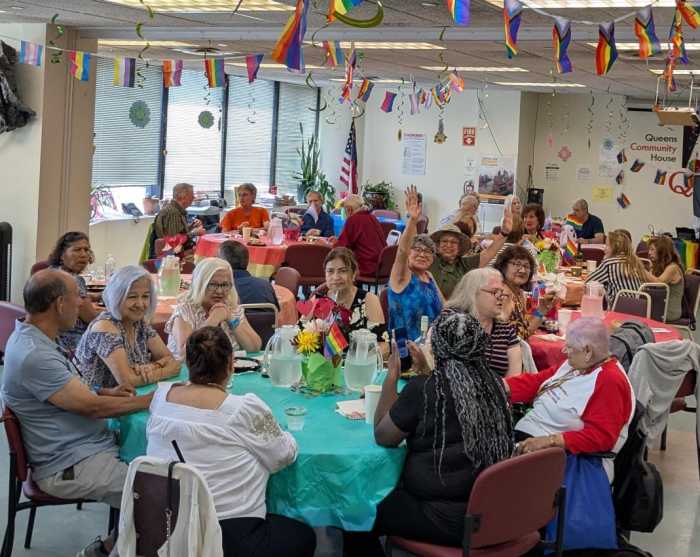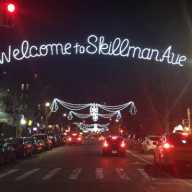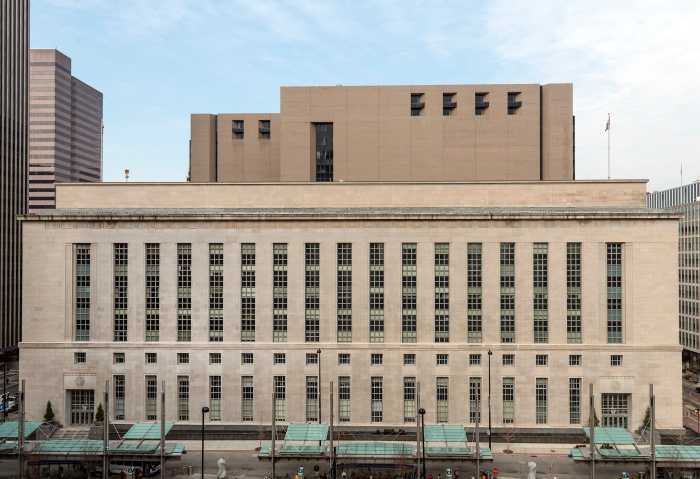
Dec. 21, 2016 By Hannah Wulkan
The Durst Organization’s recent purchase of the clock tower property in Queens Plaza has reignited concerns from local politicians about the scale of development in that section of Long Island City.
Durst announced last week that it would be developing a 70-story tower at the 29-37 41st Avenue site, in keeping with the previous owner’s controversial plans.
In addition, Durst’s development will be comprised of about 1,000 residential units, 200 more units than the previous developer Property Markets Group/Hakim Organization had planned.
“I do not support a height of seventy stories for any building in Long Island City and will continue to press for whatever changes are necessary to keep some sense of scale,” said Assembly Member Cathy Nolan, who had criticized the plans laid out by the former developers for the same reason.
Though the Durst development can be built without a zoning variance because the developer owns the air rights on the property, it does raise questions about the much-discussed up-zoning of the Queens Plaza/Court Square neighborhood, which would allow larger buildings to be built without zoning variances from the Department of City Planning.
PMG’s former plans
“It is very unfortunate that development has been able to become so unfettered in our community. I call on city planning to try and solve these issues of density and scale,” Nolan said.
This section of Long Island City is one of seven neighborhoods across the city that the de Blasio administration has publicly announced it plans to upzone as part of its plan to build or preserve 200,000 units of affordable housing.
While much of the Queens Plaza and Court Square area underwent a significant upzoning in 2001—particularly by the subways—there are still small segments in these two areas that still have room for additional development, City Planning has said. Furthermore, City Planning is expected to provide developers with the ability to build bigger buildings in the Queens Plaza/Court Square district to accommodate affordable housing.
Van Bramer elected not to address the issue of whether an upzoning is needed given the fact that a 70-story building, 1,000-unit building is in the works. However, he did air some concerns about the Durst plan itself.
“The developer has the ability to construct an extremely tall building as of right, and I am concerned about the added strain on our public transportation and other infrastructure.”
Despite their apprehensions, both politicians said they planned to work closely with the developer to make the building work within the community.
“The Durst family has been very responsive to the community in its Halletts Point project and I look forward to working with them to resolve these concerns,” Nolan noted, adding that she hopes the Durst Organization uses union labor to build the development.
“I am glad the developers have proposed community give-backs, including affordable units, a public park, and a renovation of the Queens Plaza subway entrance. As we move forward, I will work to ensure that the developer is held accountable for promises they make to the community,” Van Bramer said.
In addition to the 1,000-unit residential tower, the proposal for the property also includes a half-acre public park and a renovated entrance to the Queens Plaza subway station.
The development will include 250 affordable units, which will also provide Durst with tax breaks under the 421-a code program.
The plans for the new building are still in the early phase, but were put forward under the assumption that the new 421-a agreement would pass through the State Legislature next month.
The 421-a program that offers developers tax breaks in exchange for building affordable housing expired in January, but the Building and Construction Trades Council of Greater New York (BCTC) and the Real Estate Board of New York (REBNY) reached an agreement last month that will be voted on by the State Legislature in January.
Durst plans to take full advantage of the new 421-a agreement, which would give the organization a 25-year property tax exemption on the site, followed by 10 years of decreased property taxes.
In exchange, the Durst Organization must make 250 units, or 25 percent, affordable.
Under the new 421-a rules, 100 units would be available for those making up to 40 percent of the average median income (AMI), or $29,000 for a family of two, according to the U.S. Department of Housing and Urban Development. The rent would be set at $680 per month for a one bedroom, or $816 per month for a two bedroom under current standards.
Ten percent of the units, or 100 total, would also need to be available to those making up to 60 percent AMI. Under current standards, a family of two would make at most 43,500 per year and rent would be set at $1,020 monthly for a one-bedroom or $1,124 per month for a two bedroom.
The last 50 affordable units, or five percent, would need to be set at 130 percent AMI, or a two person household making at most $94,250 per year. Those units would cost $2,210 per month for a one bedroom or $2,652 per month for a two bedroom.
The remaining 750 units would be rented at market price.
State Senator Michael Gianaris declined to comment on the development at this time.


































